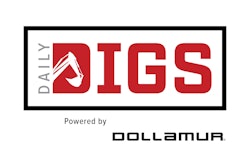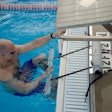
In early February, city officials in Mobile, Ala., fast-tracked two crucial votes to finance and build a new Civic Center arena. While the primary rush to approve the project was to ensure the venue was completed before the 2027 Carnival season, officials were also racing to get ahead of President Donald Trump’s proposed tariffs.
The uncertainty of future construction costs loomed over the council’s vote on a $237.4 million contract with Birmingham-based B.L. Harbert International, the low-bidder on the arena project. The firm’s chairman and CEO, Billy Harbert, agreed with city officials that tariffs on imported steel and other materials posed an unknown factor for the project’s construction.
“We don’t know the answer to that one,” Harbert said while speaking to local media. “I don’t think anyone on the planet knows where we are headed with tariffs. I’m not a big believer of tariffs, but it’s something we have to deal with.”
Mobile mayor Sandy Stimpson acknowledged that, if implemented, tariffs would be the responsibility of B.L. Harbert, but he also acknowledged uncertainty about the potential impact on the project.
Mobile’s predicament illustrates a significant challenge facing athletics, fitness and recreation facility projects nationwide. As 2025 unfolds, construction of these venues faces headwinds beyond normal budgetary concerns. From tariffs to wildfire recovery and labor shortages to insurance challenges, facility owners and operators need to understand the complex landscape ahead to navigate an increasingly volatile market.
Athletic Business caught up with three commercial construction experts who offered insights on what to expect in the coming year.
Tariff tension
President Trump’s announcement upon his election that he intended to impose tariffs on imported goods has put the construction industry on edge. Likewise, any institution or community currently planning a new facilities project undoubtedly has one eye on the current macroeconomic environment, which includes everything from the impending tariffs to possible supply chain and labor disruptions.
“You can’t have a conversation right now with a contractor — or somebody in the construction space — who’s not talking about these issues,” says Brian Kassalen, principal with Baker Tilly’s Construction practice. “President Trump announced his plans to impose somewhat sweeping tariffs on a vast number of items that will impact any level of construction.”
These tariffs could impact core construction materials, such as steel and copper. The U.S. is also a significant net importer of both hard and softwood lumber, making proposed tariffs on these products particularly concerning for indoor sports facilities, which often feature extensive wood flooring, bleachers and support structures.
For anyone considering a significant facility project in the near future, the impact of new tariffs could soon be felt in their budgets. “At some point in time, it’s going to create increased pricing, and it’s going to be hard, especially for the construction industry, for those prices to not be passed on to the project owner,” Kassalen notes. “Contractors generally already operate in some level of thin margins for what has always been a pretty risky industry.”
Paul Levin, a partner in Venable’s real estate group, sees the uncertainty affecting contract negotiations. “A lot of the negotiations on the construction side are about risk and pricing of risk, and pricing of timing,” he says. “The more uncertainty we have, the more that pushes contracts in different ways.”
Levin outlines two common approaches: fixed-price contracts, where contractors assume greater risk but build in cushion for uncertainties, or cost-plus contracts, where owners bear the pricing risk but potentially avoid hefty risk premiums.
“Either way you do it, I think you’re going to get big increases in prices,” Levin predicts. “If contractors are going to agree to a fixed price, they’ve got to have a lot more cushion in there today than they did in the past. The thing you don’t know about becomes the monster in a lot of ways.”
This uncertainty could create additional complications, including potential supply chain issues. “Steel, aluminum, wood, things like that, could all be affected. I mean, electrical contractors use a lot of conduit, a lot of copper for copper wiring,” notes Kassalen. “Could they be stockpiling inventory now, which is then going to create supply issues down the road? These kinds of things all figure into that risk equation.”
Higher education concerns
For colleges and universities planning facility projects, these challenges come at a particularly difficult time.
“The industry is financially more fragile than most people really want to admit,” says Daniel Greenstein, managing director at Baker Tilly’s Higher Education practice. “Declining enrollment has gone on for a while, and it’s likely to continue, not in every region, but in most.”
Greenstein points to industry assessments suggesting up to 40% of higher education institutions are financially weak or at risk, with private institutions closing at a rate of about two per week. Public regional universities also face significant financial pressures.
For athletic departments already grappling with new financial realities, including NIL pressures and revenue sharing with student-athletes, the uncertainty of construction costs adds another layer of complexity.
This financial pressure has already led many institutions to defer maintenance of existing facilities. “That deferred maintenance bubble is huge,” Greenstein says. “When I was the chancellor of the Pennsylvania State System, I would specifically not talk about it in testimony at the Legislature, because the number was so big, and it had the potential to overwhelm focus and potentially lead to inaction on other matters where we could make incremental progress with taxpayer dollars.”
Whether a school decides to proceed with a facility that’s already been approved or decides to downsize a project that is already underway could depend on several factors, including the stage the project is in. “I think it depends on where they are in the contracting phase,” Greenstein says, drawing parallels to another global construction speedbump: the COVID-19 pandemic. “The schools that got really messed over [during COVID] were the ones who were already contracted.”
Kassalen agrees. “During that time, we saw both project owners and contractors fighting over these price escalations, because all of a sudden, supply chain really, really tightened up,” he says. “I mean, pricing went through the roof. Project owners were saying, ‘Hey, sorry guys, you signed a contract like this. This is on you.’ So we started to encourage our contractors and project owners to engage in meaningful conversations so that everybody wanted to get the project done, nobody wanted to have significant cost overages. I think similar conversations are going to have to happen in this environment, as well.”
Wildfire fallout
While tariffs are indeed a concern, so too are events such as the recent devastating wildfires in Los Angeles, which reached such a scale that their impact on the Southern California construction market could ripple nationally. Los Angeles ranks as either the second- or third-largest construction market in the United States by spending, according to Kassalen.
“When you look at the amount of damage that has been done and couple that with the fact that it’s already a huge market for construction, it creates this perfect storm anxiety in the market,” Kassalen explains.
Labor shortages in construction, already a challenge nationwide, will likely be exacerbated by the massive rebuilding effort in Southern California. The construction industry has seen its traditional wage premium over other sectors shrink, making it less attractive to prospective workers.
“I think the latest California data that came out showed that between November and December, they lost about 1,000 U.S. construction jobs,” notes Kassalen, adding that the need to rebuild homes and commercial buildings, as well as repair infrastructure, remains. “We’re going to see a lot of challenges going forward in the construction market in Los Angeles and that will have some level of trickle-down effect. I mean, it may not be immediately felt, but if they’re going to need to pull labor in, where are they going to get that labor from?”
 Photo of Wake Forest Universitiy’s Reynolds Gymnasium courtesy of RDG Planning & Design
Photo of Wake Forest Universitiy’s Reynolds Gymnasium courtesy of RDG Planning & DesignClimate and insurance
Insurance presents another significant challenge, particularly for facilities in areas prone to climate-related disasters.
“It’s going to go up,” Kassalen says of the premiums market. “California specifically, because the California Legislature wanted to limit the increases that those companies could pass on to their residents to pay for fire insurance, and the insurers said, ‘That’s not going to work for me, so we’re just going to drop coverage and pull out of the market.’”
Kassalen suggests insurers may demand higher construction standards in exchange for coverage. “These insurance carriers are also going to say, ‘If you want us back into the market, then we need to also talk about how you’re constructing these facilities,’ ” he says. “They could say, ‘We need to have more fire-resistant construction that’s going to help withstand some of these potential damages.’ And that kind of construction is going to be more expensive.”
Levin agrees that insurance challenges will extend to commercial projects. “It’s going to be a problem in commercial building. Can you even get insurance? What’s the cost of the insurance going to be? How much higher is it going to be than it used to be?”
While Levin points out that some institutions have self-insurance mechanisms, he says that the scale of many athletic facilities creates a “highly significant, concentrated risk.”
Increases in insurance may be, at least in part, due to the effects of climate change, as worsening droughts and stronger storms may influence facility planning to a growing extent.
Greenstein wonders if disaster-prone regions might eventually see enrollment impacts, further contributing to the budget crunch at many schools. “At some point, do the kinds of disasters associated with global warming actually begin to impact enrollment trends?” Greenstein posits. “Are you going to see people voting with their feet, basically, and going to places which are safer or less prone to [disasters]?”
Kassalen echoes this thought: “A lot of people are migrating from California to other parts of the US. Part of it is, I’m sure, some sort of economic impact. But I think some of it is less risk of something catastrophic like [these wildfires] happening.”
Looking ahead
While uncertainties abound, facility owners can take proactive steps to position their projects for success. Clear communication between owners, designers and contractors about risk allocation and pricing expectations will be essential.
“From my perspective, we want to use whatever visibility we have to better understand the road ahead, so we don’t have an issue later on,” Levin says.
For college athletic directors, high school administrators and fitness facility operators, staying informed about external factors affecting construction costs and timelines will be crucial for effective planning. Whether proceeding cautiously with scaled-back plans, or waiting for greater certainty, understanding the complex interplay of factors affecting the construction market will reap rewards going forward.
“I do think it would be interesting, flashing forward one year from now, just to look back and see how all this transpired, what kind of project impacts we’ve seen,” Kassalen muses, admitting by its very nature there are no certainties when it comes to risk. “If I had an absolute crystal ball, I’d be retired, I’m sure. But I love being able to try to figure it out and then see how close we actually get to it.”




































